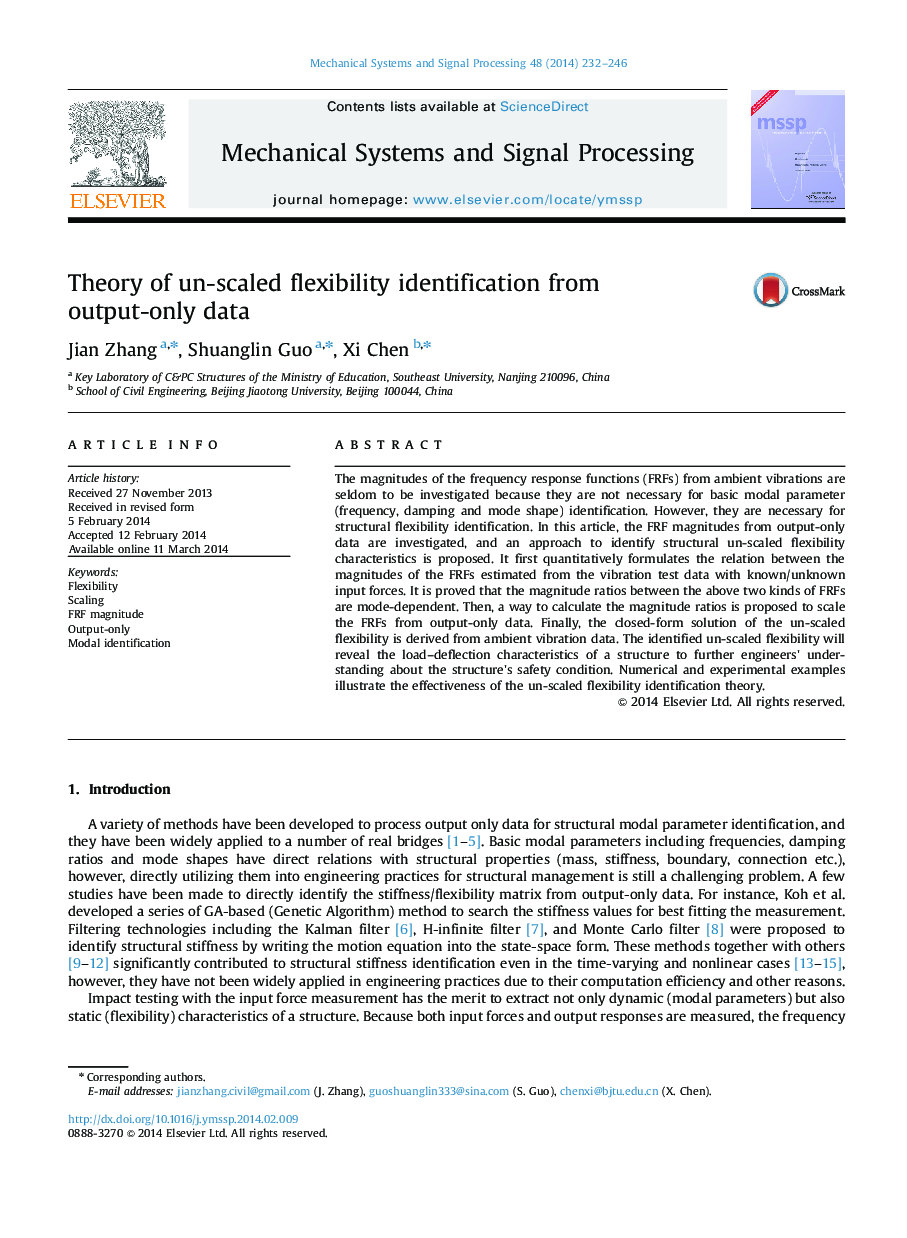| کد مقاله | کد نشریه | سال انتشار | مقاله انگلیسی | نسخه تمام متن |
|---|---|---|---|---|
| 560322 | 1451871 | 2014 | 15 صفحه PDF | دانلود رایگان |
• The theory to identify the un-scaled flexibility from output-only data has been developed.
• It is found that the FRFs from ambient data are the scaled ones form impact data.
• The magnitude ratios between the FRFs from ambient/impact test data are identified.
• A procedure to identify the un-scaled flexibility from ambient test data is proposed.
The magnitudes of the frequency response functions (FRFs) from ambient vibrations are seldom to be investigated because they are not necessary for basic modal parameter (frequency, damping and mode shape) identification. However, they are necessary for structural flexibility identification. In this article, the FRF magnitudes from output-only data are investigated, and an approach to identify structural un-scaled flexibility characteristics is proposed. It first quantitatively formulates the relation between the magnitudes of the FRFs estimated from the vibration test data with known/unknown input forces. It is proved that the magnitude ratios between the above two kinds of FRFs are mode-dependent. Then, a way to calculate the magnitude ratios is proposed to scale the FRFs from output-only data. Finally, the closed-form solution of the un-scaled flexibility is derived from ambient vibration data. The identified un-scaled flexibility will reveal the load–deflection characteristics of a structure to further engineers׳ understanding about the structure׳s safety condition. Numerical and experimental examples illustrate the effectiveness of the un-scaled flexibility identification theory.
Journal: Mechanical Systems and Signal Processing - Volume 48, Issues 1–2, 3 October 2014, Pages 232–246
